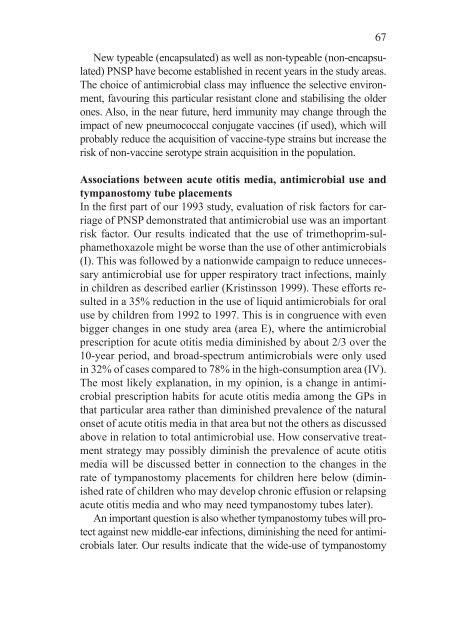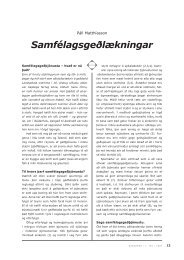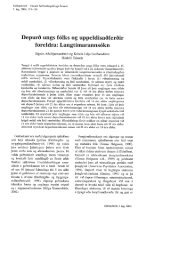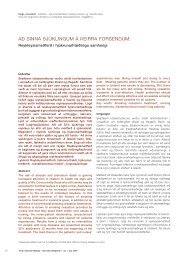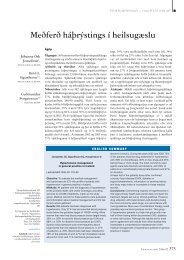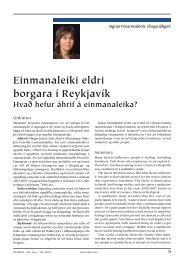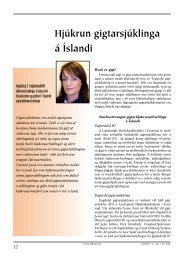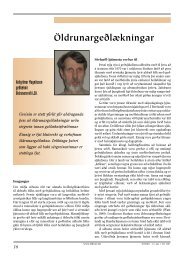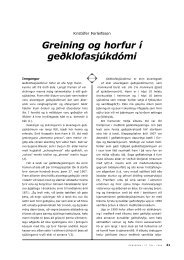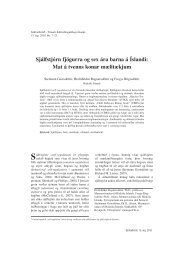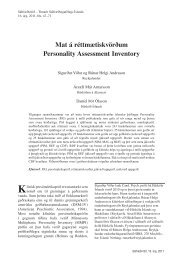Use of antimicrobials and carriage of penicillin-resistant ... - Hirsla
Use of antimicrobials and carriage of penicillin-resistant ... - Hirsla
Use of antimicrobials and carriage of penicillin-resistant ... - Hirsla
Create successful ePaper yourself
Turn your PDF publications into a flip-book with our unique Google optimized e-Paper software.
New typeable (encapsulated) as well as non-typeable (non-encapsulated)PNSP have become established in recent years in the study areas.The choice <strong>of</strong> antimicrobial class may influence the selective environment,favouring this particular <strong>resistant</strong> clone <strong>and</strong> stabilising the olderones. Also, in the near future, herd immunity may change through theimpact <strong>of</strong> new pneumococcal conjugate vaccines (if used), which willprobably reduce the acquisition <strong>of</strong> vaccine-type strains but increase therisk <strong>of</strong> non-vaccine serotype strain acquisition in the population.Associations between acute otitis media, antimicrobial use <strong>and</strong>tympanostomy tube placementsIn the first part <strong>of</strong> our 1993 study, evaluation <strong>of</strong> risk factors for <strong>carriage</strong><strong>of</strong> PNSP demonstrated that antimicrobial use was an importantrisk factor. Our results indicated that the use <strong>of</strong> trimethoprim-sulphamethoxazolemight be worse than the use <strong>of</strong> other <strong>antimicrobials</strong>(I). This was followed by a nationwide campaign to reduce unnecessaryantimicrobial use for upper respiratory tract infections, mainlyin children as described earlier (Kristinsson 1999). These efforts resultedin a 35% reduction in the use <strong>of</strong> liquid <strong>antimicrobials</strong> for oraluse by children from 1992 to 1997. This is in congruence with evenbigger changes in one study area (area E), where the antimicrobialprescription for acute otitis media diminished by about 2/3 over the10-year period, <strong>and</strong> broad-spectrum <strong>antimicrobials</strong> were only usedin 32% <strong>of</strong> cases compared to 78% in the high-consumption area (IV).The most likely explanation, in my opinion, is a change in antimicrobialprescription habits for acute otitis media among the GPs inthat particular area rather than diminished prevalence <strong>of</strong> the naturalonset <strong>of</strong> acute otitis media in that area but not the others as discussedabove in relation to total antimicrobial use. How conservative treatmentstrategy may possibly diminish the prevalence <strong>of</strong> acute otitismedia will be discussed better in connection to the changes in therate <strong>of</strong> tympanostomy placements for children here below (diminishedrate <strong>of</strong> children who may develop chronic effusion or relapsingacute otitis media <strong>and</strong> who may need tympanostomy tubes later).An important question is also whether tympanostomy tubes will protectagainst new middle-ear infections, diminishing the need for <strong>antimicrobials</strong>later. Our results indicate that the wide-use <strong>of</strong> tympanostomy67


